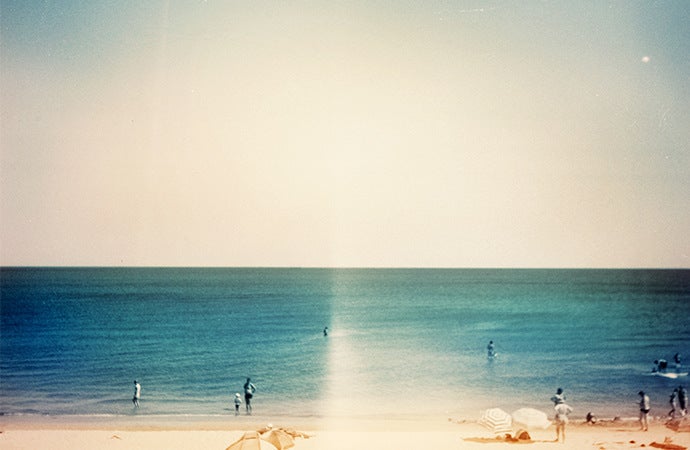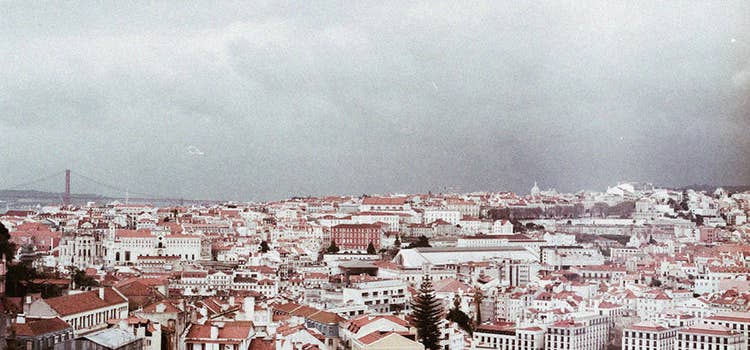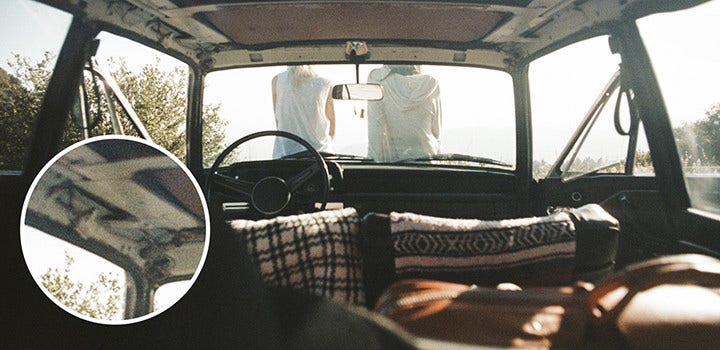
video
Learn about film grain overlays and when and why to use them.
In many films and photographs, film grain gives a lived-in, weathered and textured look. Learn about the effect and when to use it.

What is film grain?
If you’ve watched a film and seen speckles on the screen in random patterns, you’ve seen film grain. Originally, the actual grains in film grain were small particles of silver halide, the primary photosensitive substance used in chemical film. These particles are randomly distributed artefacts throughout the image. As film techniques and equipment developed, the particles were engineered to be smaller and less visible.
History and origins of film grain
As long as there have been photographs, film grain has been a part of the art form. You might recognise it in photos as small flecks of black or dark material (“grains”) in an image. Like many photographic and video techniques, it can often be used to great stylistic effect.
Filmmakers and photographers have utilised the limitations of film grain to create startling and iconic images and many filmmakers, photographers and video editors opt to use it in certain scenes to generate emotional effects — take scenes in Saving Private Ryan or Traffic, for instance.


Film grain in films and photography.
Whether it’s a fine grain or a coarse grain, ISO is the primary method for referencing how much grain exists in an image. ISO is not an indicator of how many grains are present in a film, but a measurement of the film’s sensitivity to light. Higher ISOs are more sensitive to light and, due to the size of the light-sensitive particles, are much grainier. Lower ISO settings are less sensitive to light and will produce an image with much higher resolution.
Film grain does not exist in digital photography as digital photographic sensors haven't got particles of silver halide floating around inside them. However, ISO settings in digital photography will still produce differences in film grain and image brightness. In a sense, your digital camera’s ISO setting is the computer in your camera attempting to modulate the light that hits its sensor and can be thought of as roughly approximate to ISO grades of film stock. This grain effect can be used in design as well.
Consideration for using film grain.
“In the present, time has no meaning any more,” Panos Cosmatos, director of the grindhouse film Mandy, says. “Choosing an era for your film is almost like choosing a colour.” The creative choice with film grain is yours to make. The goal of your work should inform this decision.
A sense of historical weight or nostalgia can be added with film grain. It sets a tone. “The more we get to a clean digital world, the more we long for analogue things that make us feel a sense of texture and connection,” filmmaker Nick Escobar says. Having an era in mind or an example of how you want your photos or videos to look is a great way to start thinking about where and when to use film grain in your work.
Here are some inspiring film grain examples:
- Christopher Nolan: Many Nolan films utilise film grain to great effect and you can see this in Dunkirk, his most recent war film.
- The Third Man: An iconic noir film, the night and darkness scenes in this film utilise the graininess of film at the time as an asset.
- Louis Faurer: Faurer was known for taking candid street photographs, especially nocturnal scenes, where he tried to capture the deeply human aspects of life.
- Amy Lombard: While she doesn’t limit herself to only using grain, Lombard’s photography can be a great source of inspiration for how colour and film grain can interact.

Film grain in Adobe Premiere Pro
Modern video and photo editing tools make adding in film grain easier than ever before, especially in a post-production environment with a full suite of tools.
In Adobe Photoshop, you have several options for adding film grain. The simplest is the Noise filter. You can mix, match and edit the noise to be as grainy as you like. If you’d like to exercise a greater degree of control over the image, you can utilise blending modes.
In Adobe Premiere Pro, you’ll need to find a film grain overlay. You can find free film grain overlays online and others are available to purchase. You can capture the look of 35 mm film or 8 mm film easily with digital filters. Find one that works well for your film and import it into your Premiere Pro project. You can also apply filters in Adobe After Effects to capture that classic film look.
Once you’ve done that, add it to your track. One helpful method for keeping things looking natural and lived in is to use the "overlay” blend mode.
Continue to learn about using film grain in Photoshop and Premiere Pro with help from the Adobe Help Center. Or explore Adobe Create magazine for more insight and tips on the film industry and photography.